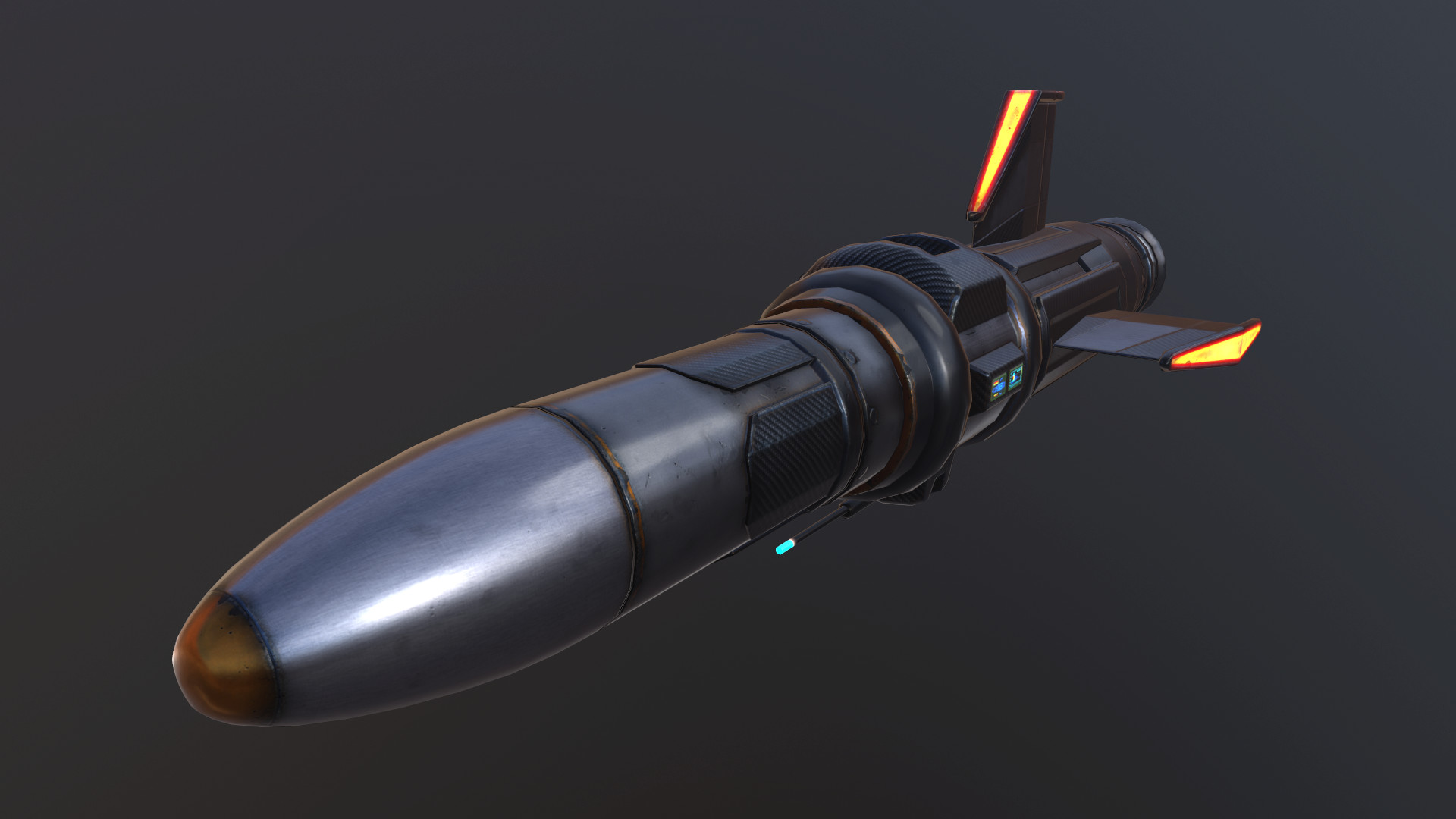The Hunger awaits

OUT OF CHARACTER INFORMATION
- Intent: To create a basic explosive variety on a missile projectile
- Image Source: [X]
- Canon Link: [X]
- Permissions: N/A
- Primary Source: N/A
- Manufacturer: Nargath Holdings
- Affiliation: Closed-Market
- Model: NZ EP-1CM
- Modularity: No
- Production: Mass-Produced
- Material: Ersteel 145 shell, Durasteel head, attachments & loading mechanism, Baradium charges
- Classification: Fragmentation
- Size: Large
- Weight: Very Heavy
- Explosive Type: Baradium Charges
- Delivery Method: Launched or self propelled depending on ship, land based or vehicle use.
- Effective Range: Large
- Area Of Effect: Large total [Average per charge]
- Stopping Power: High
- Special compartimental packaging of payload: Due to the compartimental packaging of the payload, after the primary explosion, the Baradium charges will be flung over a broad range, with secondary explosions as a result over a more widespread area.
- Penetration head: The form of the missile's head is build and designed as such that it penetrates in a similar way to a slug, allowing for a deeper onset of any explosion happening after the initial impact.
- General area of effect: Due to the NZ RP-1CM using the principle of clusterbombs or missiles, it's initial impact is followed by a discharge or expelling of dozens of individual Baradium charges, which each will explode with an average area of effect for each singular charge being expelled, thus maximizing the spread of the explosion.
- Long Range: Thanks to its aerodynamic shape, the NZ RP-1CM has the benefit of being able to reach over a long range both in space and in atmospherical conditions, though not battlefield-traversing, reaching targets should not be an issue in the long run.
- Unexpected Results: Due to it's cluster bomb principle, the NZ RP-1CM's payload and consequent explosions are hard to predict and any hit could in fact be fatal if any of the drifting charges get to any important place upon the intended target, due to this, an NZ RP-1CM could potentially cripple entire ships on its own simply because it is relatively hard to predict where the seperate charges woukld wreak havoc after being expelled from the main projectile.
- Very Heavy: The load of many seperate charges into a single missile or torpedo make for a rather heavy and cumbersome projectile to handle, it doesn't help that it is also a large projectile and thus given it's weight and size, it isn't an easy thing to load into missile pods when it is done manually.
- Unexpected Results: There is a downside to a weapon's every strength, in this case it is self evident that the lack of actual control over where the expelled charges would reach could also pose a threat to the user of it. After all, if it is used within too close of a range, the charges might actually hit the user or the vessel using the weapon itself, blow up an entire ship when it isn't the intention, etc. As always though, the result of a weapon is only as good as the one wielding or using it.
The NZ RP-1CM was a design that accidentally came into the minds of the company's brightest engineers, seeing that Nargath Holdings was expanding its ship and vehicle placement weaponry, the thought was that perhaps expanding upon this increase in products would best be served by designing and producing their own explosives and ordinances as well, increasing the many ways in which Nargath Holdings could benefit from using products built and designed in house when it came to the creation of new ships and vehicles for military purposes.
The design of this weapon was based on the principle of a cluster bomb, packaging a multitude of about two dozen small Baradium charges into a single projectile, which would be expelled after the initial impact, allowing for a wider range of explosions and though less potent than a single charge, this would increase the area of effect by a veritable multiplication and also lessen the dangers of premature ignition. The downside was and is the uncontrollable results of the charges being expelled, but the designers decided that this was something each weapon in the end would have: unexpected results.
Last edited:







